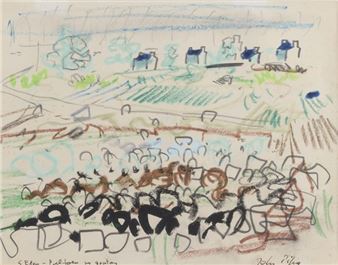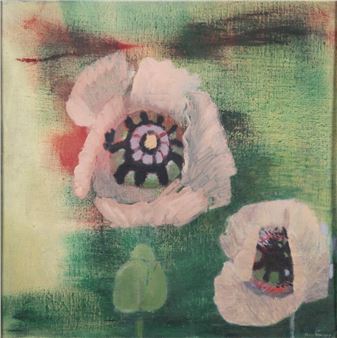Private & Public: Finding the Modern British Garden
The interwar period in Britain saw a flowering of artists who retreated to planting and painting in their gardens – their own private havens. Conversely, this time also saw a number of artists engaging with public green spaces amidst a growing interest for recreation. From fireworks and fairgrounds to picnics and parties, these paintings captured a new, modern experience of spending leisure time in nature.
This exhibition will bring together intimate depictions of gardens and greenhouses, public parks and favoured plant specimens by artists of this era.
Finally, this exhibition will also examine the blurring of boundaries between private and public spaces, as a number of artists represented here frequented houses and gardens such as Garsington and Sissinghurst; spaces transformed by Ottoline Morrell and Vita Sackville-West between the wars. This can also be seen in the emergence of artist communities, such as the Great Bardfield group.

Recommended for you
The interwar period in Britain saw a flowering of artists who retreated to planting and painting in their gardens – their own private havens. Conversely, this time also saw a number of artists engaging with public green spaces amidst a growing interest for recreation. From fireworks and fairgrounds to picnics and parties, these paintings captured a new, modern experience of spending leisure time in nature.
This exhibition will bring together intimate depictions of gardens and greenhouses, public parks and favoured plant specimens by artists of this era.
Finally, this exhibition will also examine the blurring of boundaries between private and public spaces, as a number of artists represented here frequented houses and gardens such as Garsington and Sissinghurst; spaces transformed by Ottoline Morrell and Vita Sackville-West between the wars. This can also be seen in the emergence of artist communities, such as the Great Bardfield group.
Artists on show
Contact details

Related articles
The Garden Museum does what it does best with a glorious evocation of the British garden in the interwar period












